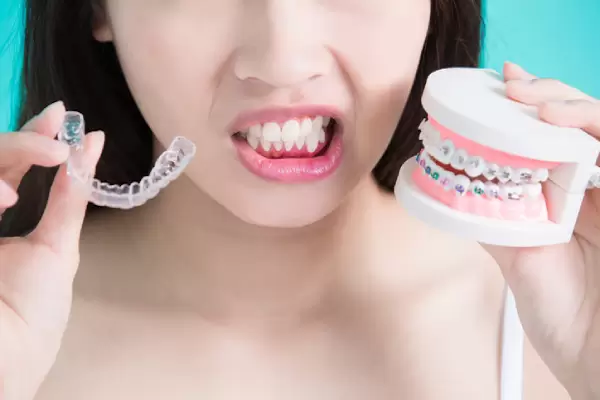
If you’re looking into getting your teeth problems fixed and sorted, you’d be surprised to know that there are now more options to choose from besides the regular old braces. Out of these new solutions, clear aligners, amongst which Invisalign is the most well-known, have become a favourite amongst adults due to their convenience and other welcome benefits.
To discover if this new correction system is the best for you or if the ever-reliable braces are still the way to go, read on below.
The Major Differences Between The Two
Clear aligners or Invisalign braces have one big difference (and advantage) compared to traditional braces: its material. Invisalign aligners are essentially customised trays that are made out of flexible and removable medical grade plastic. Unlike metal brackets and wires that come with traditional braces, Invisalign utilizes thin, clear and virtually invisible plastic trays that are customised to fix your teeth irregularities.
That said, the methodology behind these solutions still remains the same: both orthodontic solutions utilise gentle pressure to move the teeth to their correct position.
Effectiveness Of Each Solution
There’s no arguing that traditional braces are more effective when it comes to complex cases. By being directly attached to your teeth for 24 hours a day, seven days a week, results are guaranteed to show even after just a few months into the treatment. And after a year or two, you’ll be free of them, and you can fully enjoy the perfect smile that you’ve long been waiting for
Clear aligners, on the other hand, are more ideally suited for simpler and easier dental issues. With its inherent flexibility and convenience, it must trade-off a bit of effectiveness. These plastic trays simply do not have the same force and abilities to move teeth like braces do. When it comes to complex orthodontic treatment or major teeth irregularities, clear aligners may not be a viable option.
Essentially, since every person’s case will vary, the rate at which your treatment progresses will depend on your teeth and the complexity of the corrections that must be made. After a thorough analysis, your orthodontist will ultimately decide on the solution and appliance, be it traditional braces or clear aligners, that will help you attain the desired results.
Cost Of Convenience And Innovation
Today, there is an extensive number of orthodontic solutions that caters to individuals of various budgets. Generally, however, clear aligners tend to be more expensive than traditional braces due to the premium materials and technology used. Moreover, Invisalign trays are typically changed out every one or two weeks, which contribute to the total costs. Thus, the longer your treatment is, the more you’ll have to pay for aligners.
For reference, traditional braces typically cost S$3,500 – S$5,900; compare this to Invisalign treatment that can cost anywhere from S$4,200 – S$9,000.
In the end, the total cost is primarily dependent on the complexity of your teeth irregularities and by extension, the duration of your treatment. Other minor factors, such as maintenance of your dental solution, plays a part too.
Benefits Of Traditional Braces And Clear Aligners
Due to its unparalleled effectiveness for dental issues of all kinds, braces are recognised as the most reliable corrective solution in dental treatment. No matter the degree of complexity, from severe malocclusions to simple gaps between one’s teeth, putting on some braces will guarantee you the results that you desire.
Apart from efficiently delivering its promised outcome, there are also several types of braces to choose from if one wants to hide them as best as possible. For example, ceramic braces are significantly less visible with no substantial compromise. And if you want total concealment, then lingual braces in Singapore are the best solution among the three.
On the other hand, clear aligners offer the greatest flexibility and convenience amongst all others. Apart from being transparent and removable, they’re also the least complicated fixture to boot. This means considerably fewer complications during the treatment, a lot of which may arise when using traditional braces.
Additionally, a mouth that’s free of any wires and metal brackets means taking care of your oral health is relatively as straightforward as before. No extra effort nor time need to be spent to navigate and get to difficult areas that need cleaning.
Conclusion
Traditional braces and clear aligners both have their pros and cons, but ultimately, they fulfil the same job of straightening your teeth and fixing your dental problems. Depending on your case’s complexity and other factors, your orthodontist may recommend one over the other.
